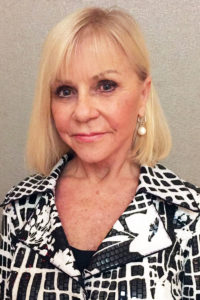
Staffing issues are a top challenge faced by most casino companies, especially when labor shortages make the challenge even more critical. That’s why it’s more important than ever for casinos to conduct team member surveys and act on what they learn. A survey with reliable data gives management a true picture of what their team members think about their organization and what they can do better to improve their workforce.
Numerous studies have shown that when an organization is responsive to team members it leads to:
- Higher retention rates
- Lower absenteeism
- Increased productivity
- Improved team member morale
- Better guest service
Every company wants all those things, but conducting a team member survey can be even more difficult than sending out a guest survey. A key challenge that some casinos encounter is low response rates for a team member survey, which can result in unreliable data.
A “research rule” for team member surveys is not to do them yourself. Anonymity for respondents is the first, and arguably most, important consideration. Team members are more reluctant to complete an internal survey honestly if they think their boss knows how they answered.

The following information explains how a successful team member survey was conducted with Raving and Playground in Quebec. HR Director Sandra Fraser and CEO Phil Sabbah came up with a winning action plan to generate maximum response to their team member survey.
The first step was coordination with Raving and Playground to develop survey content that would result in the specific data that Playground wanted and needed about their workforce. Then Playground provided a list of personal email addresses to use for the online survey invitation. Playground offered three prizes as incentives for completing the survey – a large smart TV, a local department store gift card, and a restaurant delivery gift card.
Sandra and Phil also took the following steps to generate awareness of the survey and increase participation:
- Put the top prize (TV) in the staff room, under a TV that had a message dedicated to the survey as well as a QR code to access the survey.
- Communicated with the department heads in a group setting, encouraging them to get their team members to participate.
- Let different departments know, in a public setting, which departments had the most participation (creating a sense of competition).
- Communicated privately with department heads whose departments had the weakest turnout (all of these ended up finishing strong).
- Encouraged managers to seek out “disgruntled” team members and motivate them to participate.
- Sent out general communications to all team members via internal channels.

When Raving asked Fraser what she thought they did that worked best for generating a high response rate, she explained, “We were transparent in our approach and our goal. We shared that post-pandemic and before the opening of our new sizeable expansion, we, as an organization, had a renewed focus on making genuine improvements and investing in our people. We wanted to make sure that our team members were engaged and felt empowered. Communications to our team members went out on several occasions, where they were encouraged to confidentially share their true opinions/feelings with Raving. The combination of knowing that their comments would be anonymous, their remarks would be heard, and they also had an opportunity to win prizes by completing the survey all contributed to the high number of team members who responded.”
Fraser added that the team member feedback Playground received was all positive, saying, “Our team members were vocal in their appreciation for the opportunity to anonymously share their thoughts, with the knowledge that we are committed to the process of making positive changes that will, and do, affect our team members as well as our guests. We are confident that working with Raving will enable us to improve our workforce, enhancing team member satisfaction and retention.”
A final note about team member surveys is to provide some type of feedback about the survey once it’s over. If team members see that nothing changes as a result of their feedback, they feel as if their voice doesn’t matter and will lack the incentive to participate in future surveys. When management communicates with the workforce about survey results, it fosters transparency and a sense of trust, showing that leadership embraces the feedback and the areas for improvement it reveals.
Thank you to HR Director Sandra Fraser and CEO Phil Sabbbah. Fraser is a human resources professional with over 15 years of responsible and progressive experience in talent acquisition and human resource management with a demonstrated passion for people and strategy. Sabbah is an accomplished marketing and organizational leader, who has played an essential role in conceptualizing, developing and growing the Playground brand since its inception in 2010.




